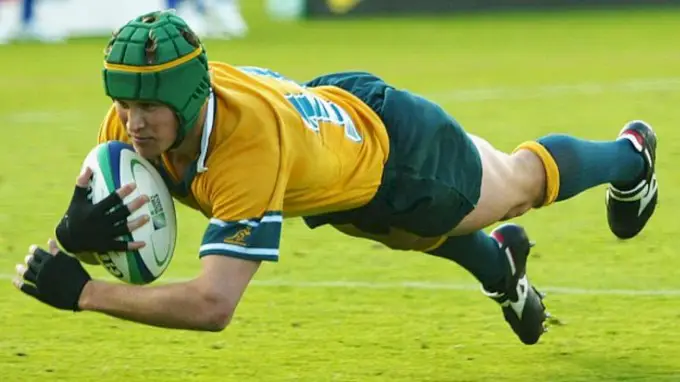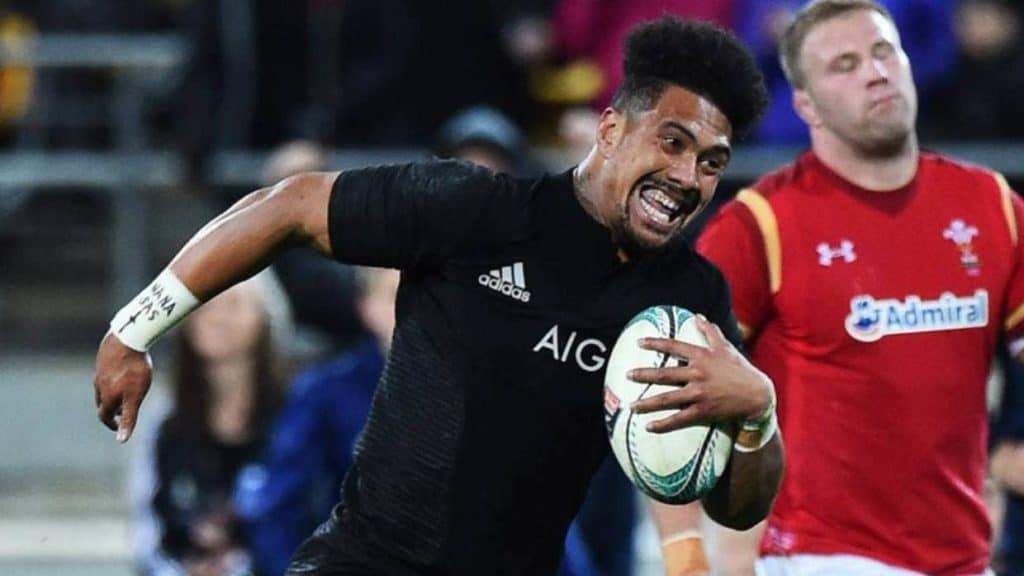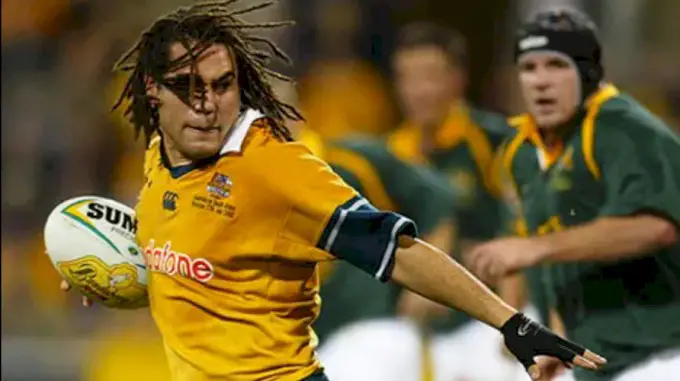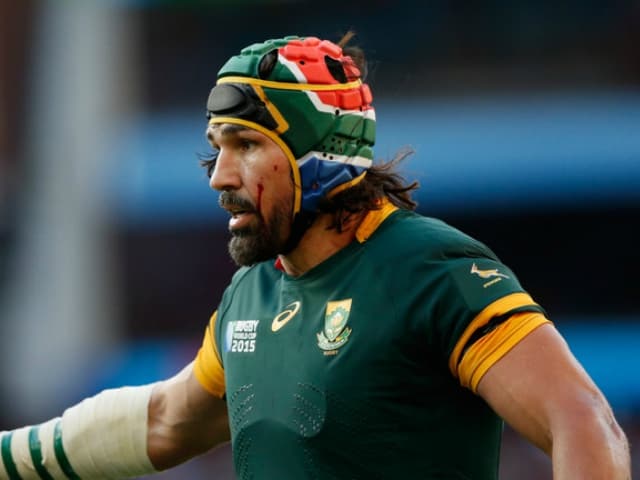
When watching a rugby match it can be easy to conclude that rugby players are fearless, indestructible athletes who are impervious to injury and have no need for protective equipment. Is that really true? In this article we will see if rugby players do actually wear protective clothing.
What protection do rugby players wear?
Rugby players wear a variety of protective equipment including mouthguards, scrum caps, shoulder pads, taping different body parts such as heads, knees and thighs and occasionally gloves. All these items are optional except mouthguards and help reduce common rugby injuries such as bruises, lacerations, sprains and tears.
Even though rugby players don’t wear as much protective clothing as their American football cousins they still do wear a variety of items which help reduce their risk of injury.
Do Rugby Players Have To Wear Gum Shields?

In most countries such as Australia, New Zealand and England all junior rugby players have to wear gum shields. In senior rugby it is optional but is strongly recommended by the governing bodies.
Recently it was mandated that players regardless of age must wear gum shields in New Zealand. In 2016 a number of All Blacks players including Ardie Savea were reprimanded for not wearing mouth guards during their clash with Wales. There is a collective agreement between New Zealand Rugby and the Rugby Players Collective Incorporated that all players must wear gum shields.
Do Rugby Players Wear Shin Pads?
Rugby players are allowed to wear soft shin pads, however it is very rare with the vast majority of players not wearing them. Rugby players do often get hit in the shins so it is surprising shin pads are not more popular.
Rugby is not like football where players are constantly hacking at each other’s shins. Even though there is some contact between boots and shins in rugby it is not enough to warrant rugby players donning shin guards. In a rugby match you would be unlikely to get hit in the shins more than a couple times and usually it is not enough to feel it. Due to the low chance of injury most rugby players have determined it isn’t worth wearing shin guards.
Do Rugby Players Wear Pads?
Some rugby players wear shoulder pads, however many wear no padding. Rugby players can only wear soft shoulder pads. Padding on other parts of the body is very rare.
The padding which rugby players sometimes wear is very different to the pads that American football players wear. Rugby padding is soft and only offers minimal protection. It can’t be used as a weapon like hard plastic football pads.
Shoulder pads are not uncommon in rugby but the majority of players do not opt to wear them. Usually it is the more slightly built players such as wingers, halfbacks and flyhalves who opt to wear shoulder pads. No wonder when they often have players twice their size sprinting full speed at them. You can forgive them for wanting to help their shoulder out a bit.
Rugby players can wear compression shirts and shorts which have inbuilt soft padding, however these are rarely worn.
Do Rugby Players Wear Gloves?

Rugby players do not typically wear gloves. In the early to mid 2000s gloves became popular among rugby backs particularly halfbacks, however in recent years their popularity has declined with few players wearing them.
If you were a rugby fan back in the early to mid 2000s you would have seen gloves all over the rugby pitch. Gloves appeared to peak in popularity at the 2003 World Cup with famous wearers including Georgie Smith, Matt Dawson, Matt Giteau and Stirling Mortlock. They were particularly popular among Australian players maybe because the Aussies can’t handle the cold well.
Due to the rapid decline in the popularity of the gloves many rugby fans have wondered if they have been banned. Rugby gloves can still be legally worn but they can not have extra padding, be covered in any sticky substance or cover the fingers. The reason gloves are no longer popular appears to be part end of a fashion trend and the realisation that they didn’t help with on field performance.
Do Rugby Players Wear Helmets?

Rugby players do not wear helmets like American football players. Rugby players do have the option of wearing soft padded headgear known as scrum caps. As scrum caps are soft they offer limited protection to the head.
Rugby has its own form of helmets known as scrump caps. Scrum caps are made of soft padding and cover the top of the head and ears. Due to their soft shell design you definitely do not see rugby players using them as a weapon and turning themselves into a human battering ram.
Scrum caps offer no face or chin protection. It is unclear how much protection scrum caps actually offer as studies are inconclusive on the ability to reduce head injuries. Many players wear them as they are a safety blanket and they feel safer even if the feeling is a placebo effect.
Scrum caps are effective in reducing cauliflower ear as they reduce the friction a player’s ears suffer. This is why headgear is particularly popular with front row forwards who want to maintain non deformed ears.
Why Do Rugby Players Wrap Their Legs?

Rugby players wrap their legs so they can be easily lifted in the lineout. The tape acts as a handle and provides extra grip. This is why only lineout jumpers wrap their legs.
During a lineout there are specialised players known as lineout jumpers who will leap in the air in an attempt to catch the ball. As they are jumping their teammates will lift them giving them a boost so they have a greater chance of catching the ball. Lineout jumpers tape their legs so their teammates can use the tape as a secure grip allowing them to easily lift them in the air. By wrapping their legs jumpers can be lifted very high.
Why Do Rugby Players Tape Their Wrists?
Rugby players tape their wrists to strengthen them. The tape acts as a reinforcement which keeps the wrist straight, preventing sprains and breaks due to the wrist being violently bent which can occur during contact.
When tackling an opponent it is easy to get your wrist caught in a nasty angle which can put tremendous stress on your joint leading to strains and even breaks. By taping their wrists rugby players aim to reduce the aforementioned situation from resulting in an injury as the tape provides the wrist making it stronger and less susceptible to damage.
Why Do Rugby Players Tape Their Ears?

Rugby players tape their ears to reduce the risk of cauliflower ear. Cauliflower ear is caused by a heavy blow or the ear being grinded against. The tape reduces the friction the ears suffer particularly during scrums and rucks and thus reduces the chance of players getting cauliflower ear.
You only really see forwards tape their ears and heads during rugby. As forwards are always putting their heads in places they don’t belong such as rucks and scrums. These are the areas which are high risk for cauliflower ear due to the rubbing and hits the ears cop. Backs typically only tape their head after they have suffered a cut. The tape is used to stop the bleeding so they can continue playing the match without spraying everyone with blood.
Conclusion
Rugby players have the option to wear a variety of protective equipment from mouthguards, headgears, shoulder pads to tape and gloves. The equipment often offers minimal protection as it is made from soft materials unlike American football protection. Despite the many options of protection that rugby players have many choose to wear no protective clothing.
